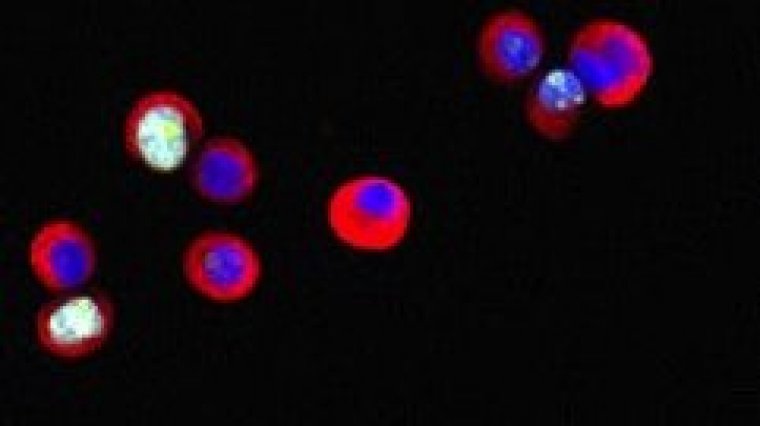| Health / Health News |
Isolated cancer cells may lead to personalized treatments
NIH | JULY 31, 2014
Cells shed from tumors enter the bloodstream in very low numbers and circulate through the body. These circulating tumor cells (CTCs) can take root elsewhere, causing the spread of the cancer to other organs, a process called metastasis. As cancers grow and spread, they can undergo genetic mutations that enable them to become resistant to treatment and survive and grow at metastatic sites. The isolation and analysis of CTCs may thus be a useful method for tracking how cancers evolve during therapy.

Circulating tumor cells from the blood of a breast cancer patient. Image by Maria C. Donaldson and Min Yu.
Isolating these rare CTCs from the blood of cancer patients, however, has been a technical challenge. Recently, researchers developed a way to isolate CTCs using microfluidic technology. The microchip device, called the CTC-iChip, enriches CTCs by removing blood cells. As the method doesn’t rely on any cell-surface proteins expressed by tumor cells, it can be applied to virtually all cancers.
In their new study, the research team from Massachusetts General Hospital and Harvard Medical School used the CTC-iChip to establish cell cultures from breast cancer patients.
The scientists collected blood samples from 36 patients with metastatic, estrogen-receptor-positive breast cancers. Using the CTC-iChip, the researchers isolated CTCs from these samples and were able to establish cell lines from 6 of the patients. They found that 3 of 5 tested cell lines formed tumors when injected into mice.
The CTC lines proved to be genetically different than the original tumors. Newly acquired mutations were found in several cancer-associated genes: fibroblast growth factor receptor (FGFR2), PIK3CA, TP53, KRAS, and estrogen receptor (ESR1).
The researchers tested a number of drugs on the cells to find better therapies to treat the cancers. They found that different combinations of drugs were effective against tumors carrying these acquired mutations.
This approach of culturing circulating cancer cells in the blood, analyzing them for new mutations that have developed during therapy, and testing the utility of drugs targeting those mutations could become the essence of individually adjusted cancer therapy in the future.
YOU MAY ALSO LIKE



